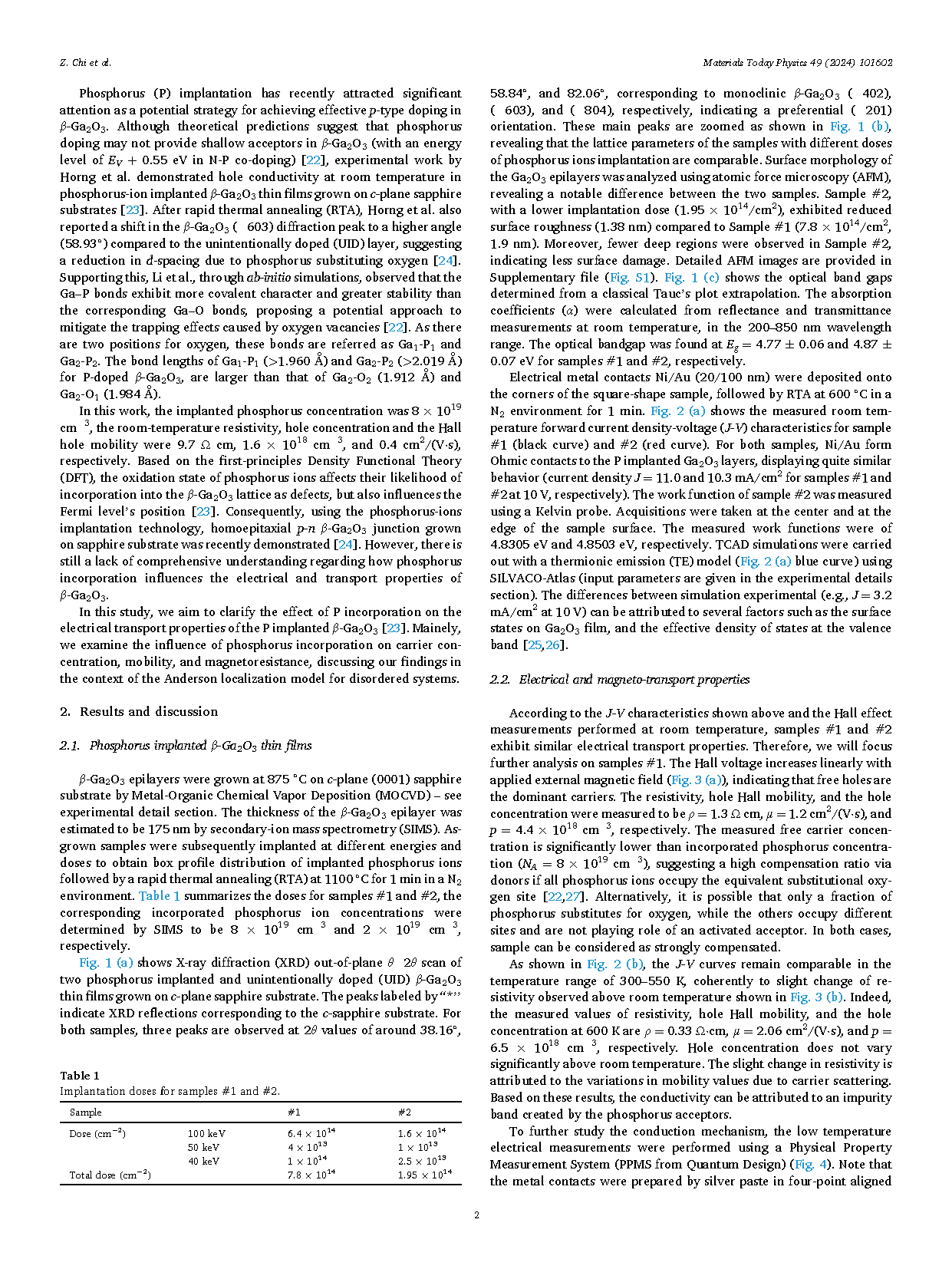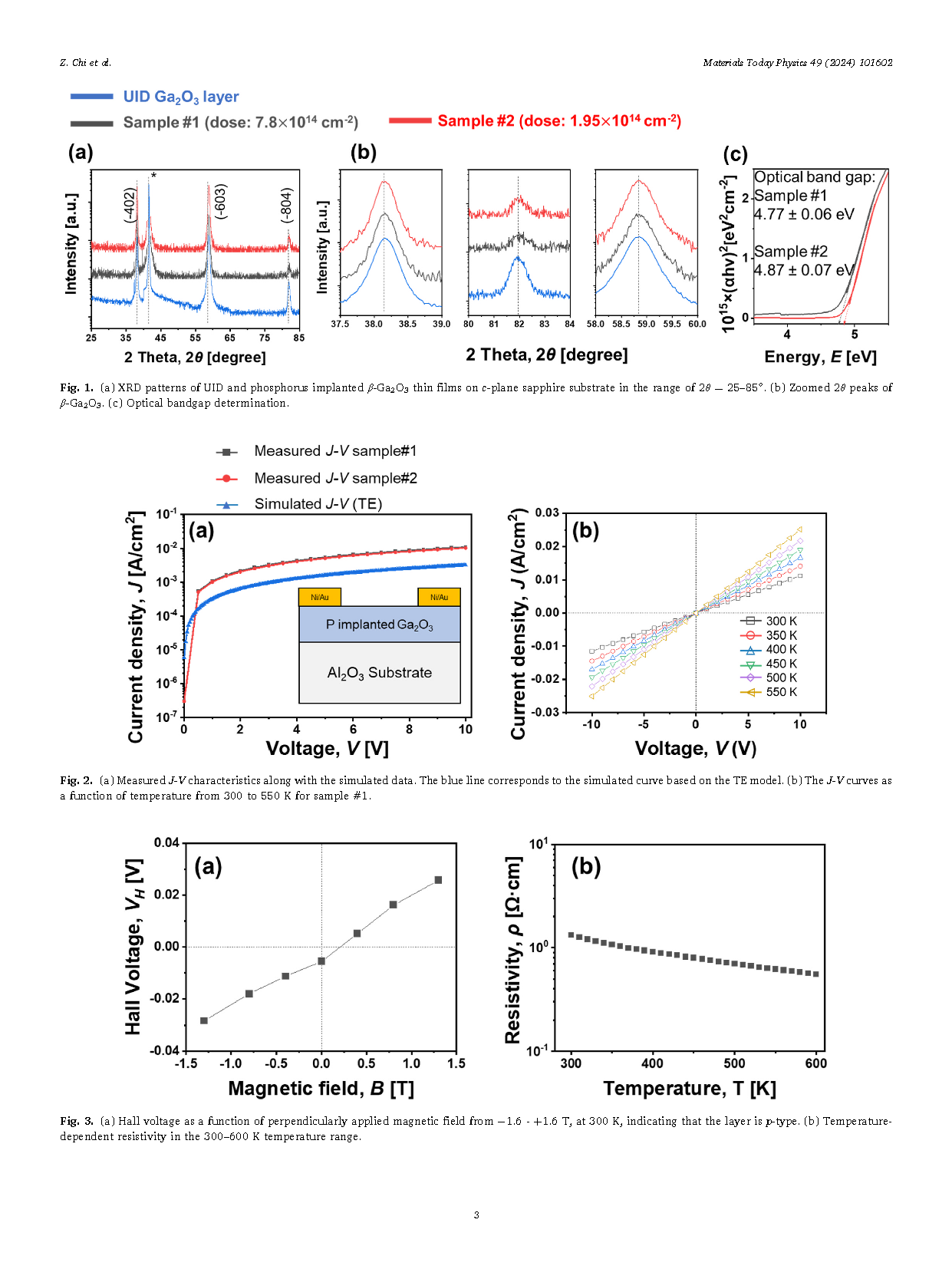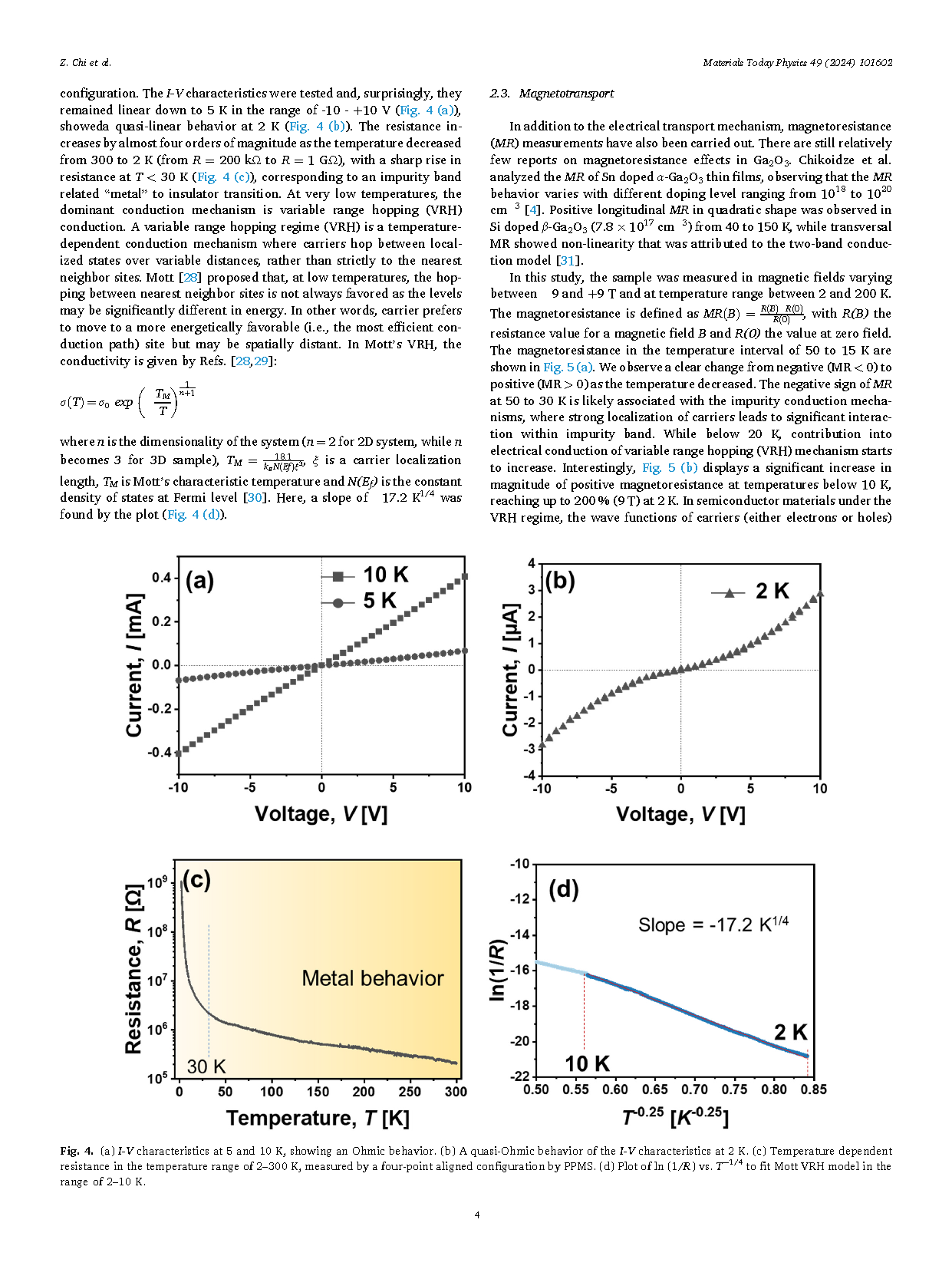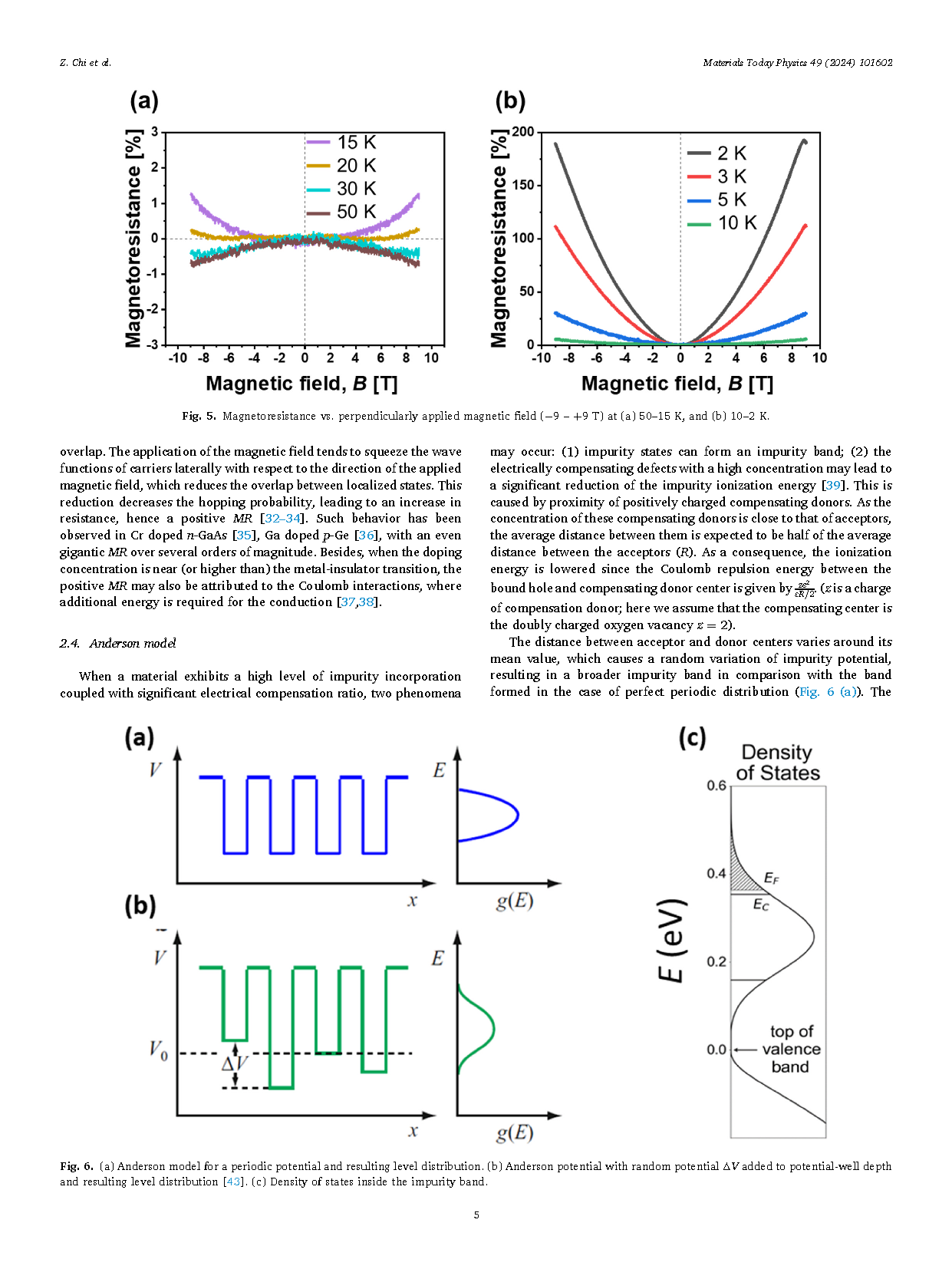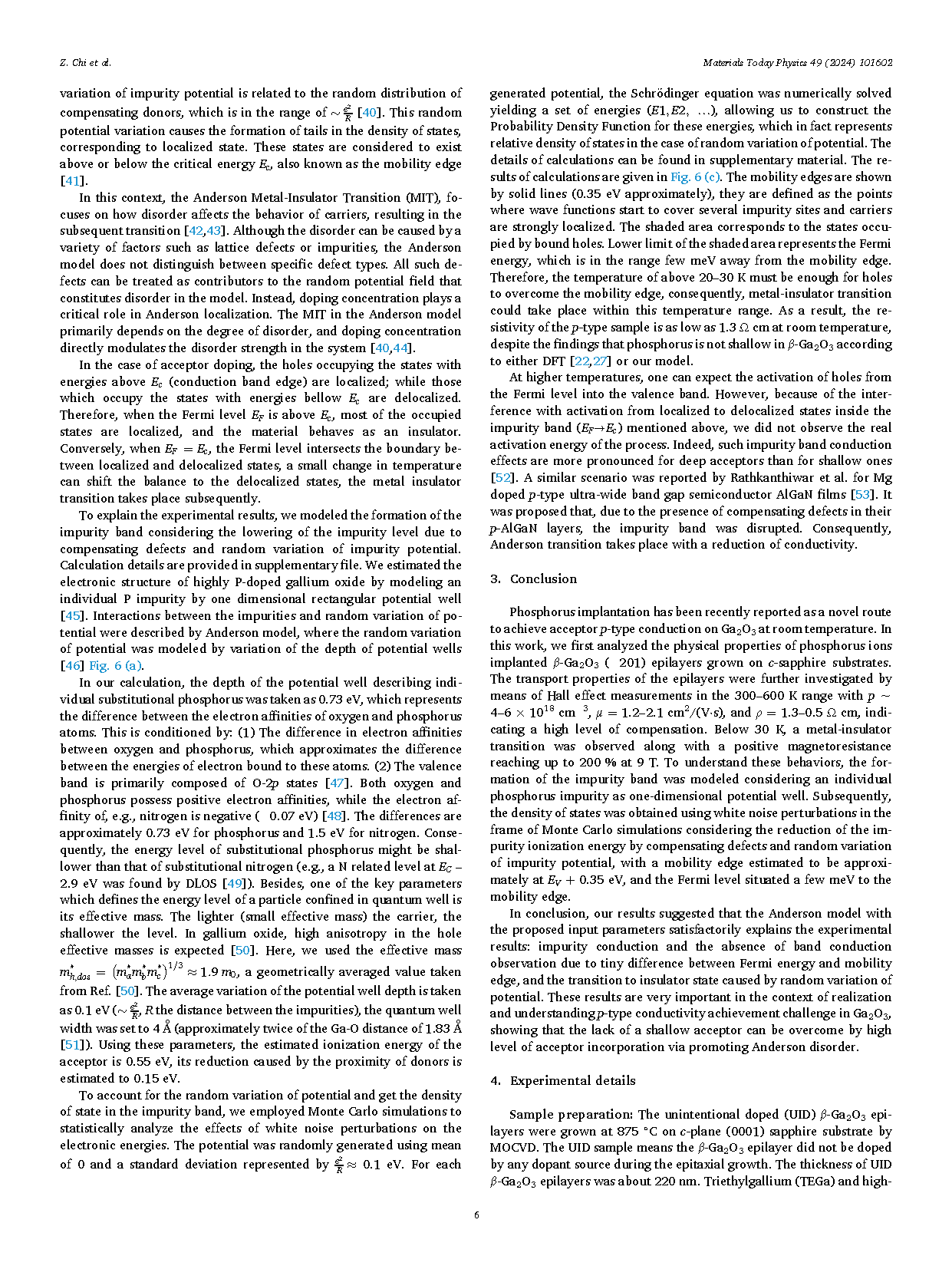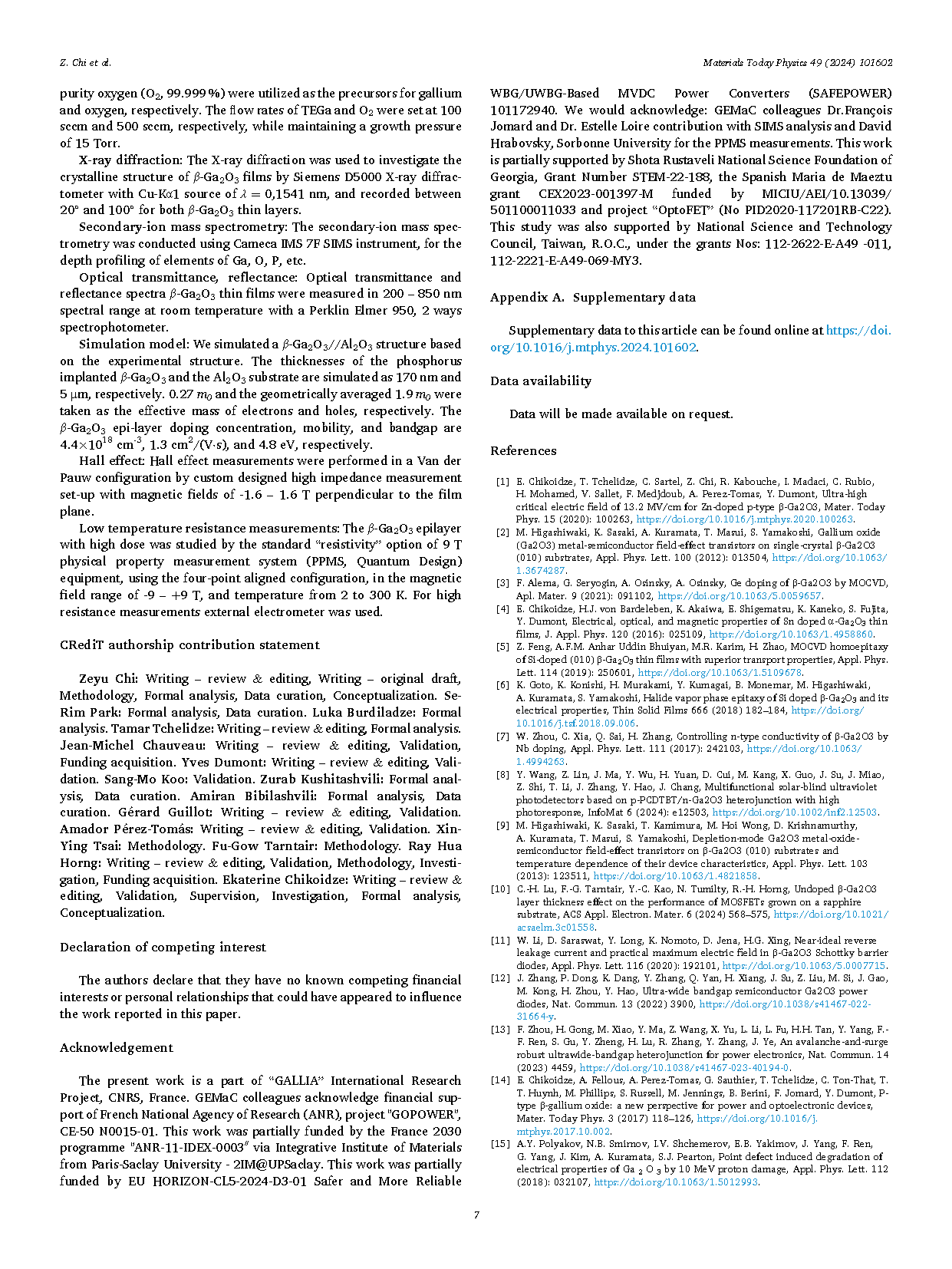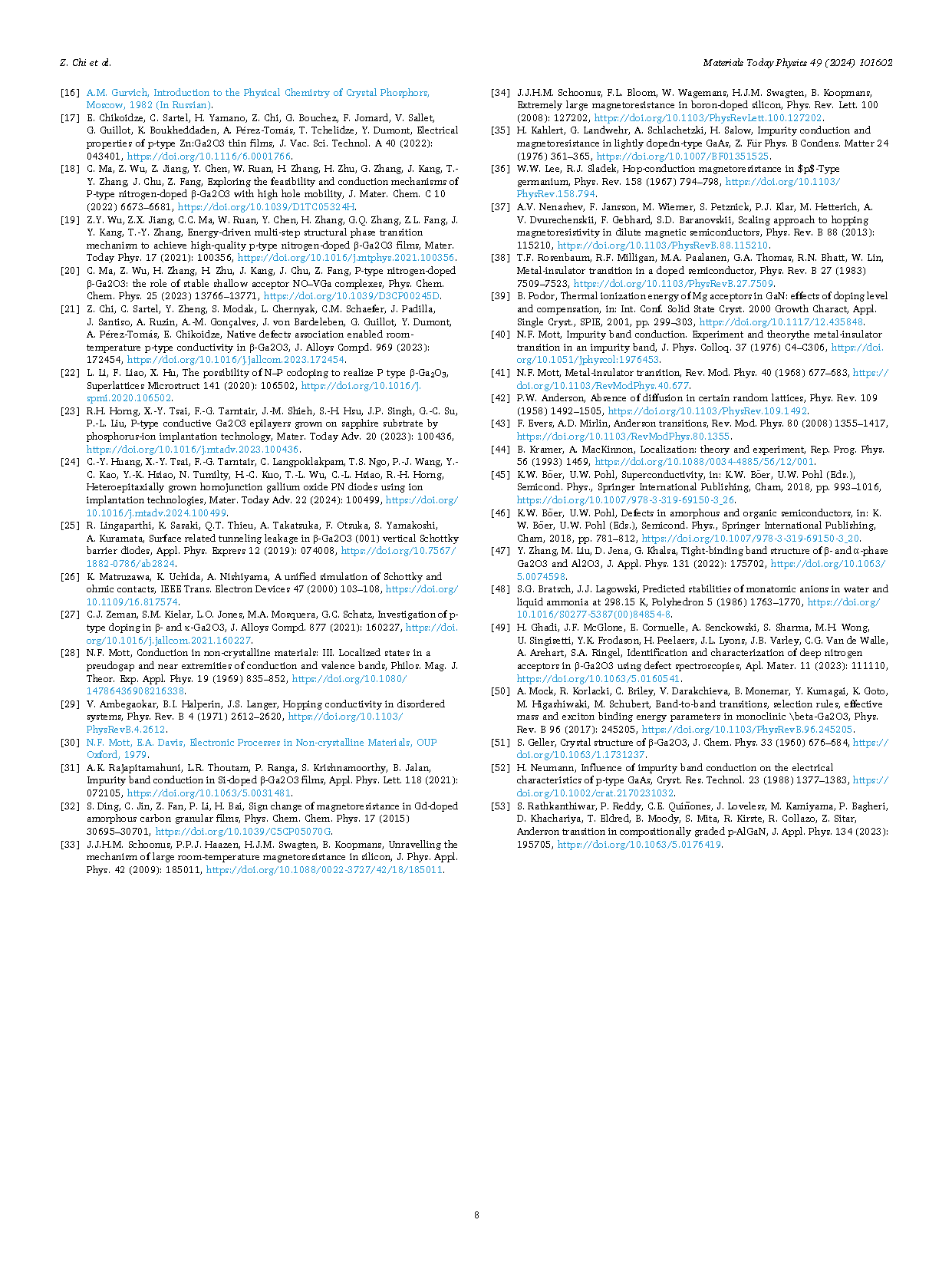
【International Papers】Anderson disorder related p-type conductivity and metal-insulator transition in β-Ga₂O₃
日期:2025-01-13阅读:502
Researchers from the Paris-Saclay University have published a dissertation titled " Anderson disorder related p-type conductivity and metal-insulator transition in β-Ga2O3" in Materials Today Physics.
Abstract
The p-type doping is one of the main challenges of the emerging semiconductor β-Ga2O3 technology. Phosphorus (P) implantation has been recently reported as a novel route to achieve p-type conduction on Ga2O3 at room temperature. Here, P-implanted epilayers, grown onto c-plane sapphire revealed a pseudo-metallic behavior (ρ = 1.3–0.3 Ω cm) in the 300–600 K range with a hole carrier concentration of p ⁓ 4–6 × 1018 cm−3 and hole mobility of μ = 1.2–2.1 cm2/(V·s). At sufficiently low temperature, a metal-insulator transition arises together with an increase in the positive magnetoresistance, reaching up to 200 % (9 T) large positive magneto resistance effect at 2 K. It is suggested that an Anderson delocalization model explains the room temperature conduction, and the transition to an insulator state caused by random variation of potential related to the incorporated phosphorous in Ga2O3. We believe that the lack of shallow acceptors can be mitigated by promoting Anderson disorder through the incorporation of a high level of acceptor impurities.
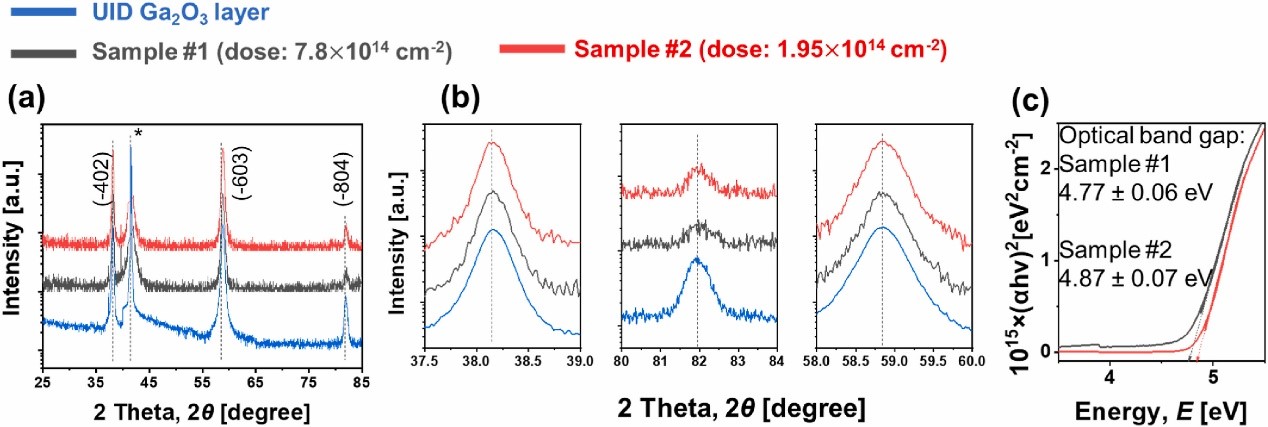
Fig. 1. (a) XRD patterns of UID and phosphorus implanted β-Ga2O3 thin films on c-plane sapphire substrate in the range of 2θ = 25–85°. (b) Zoomed 2θ peaks of β-Ga2O3. (c) Optical bandgap determination.
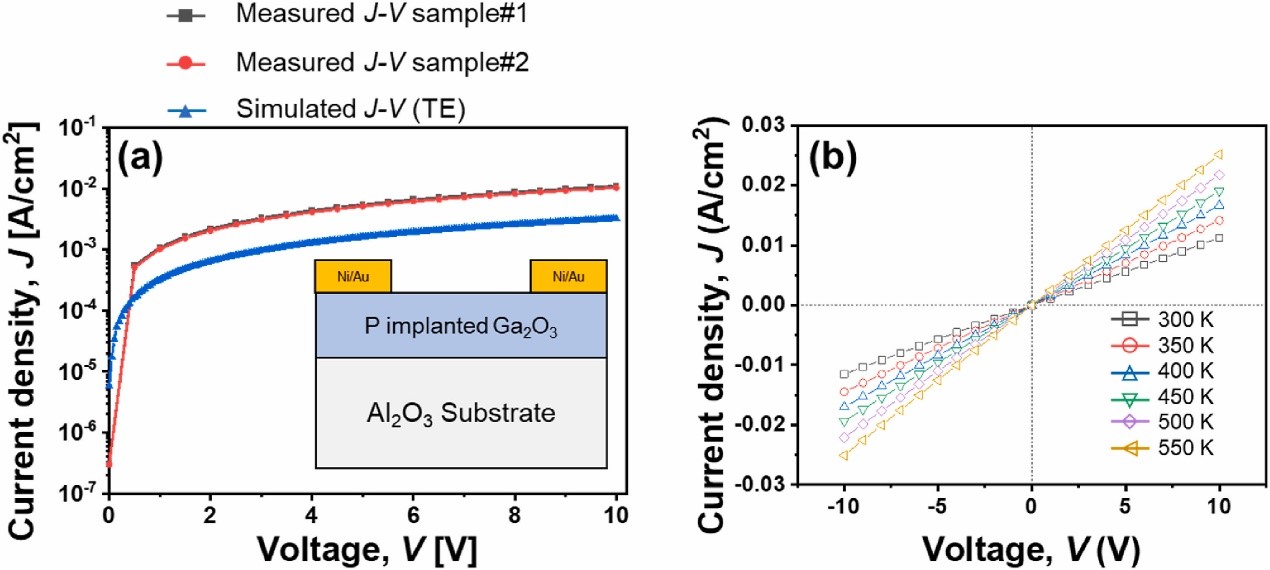
Fig. 2. (a) Measured J-V characteristics along with the simulated data. The blue line corresponds to the simulated curve based on the TE model. (b) The J-V curves as a function of temperature from 300 to 550 K for sample #1.
DOI:
doi.org/10.1016/j.mtphys.2024.101602

